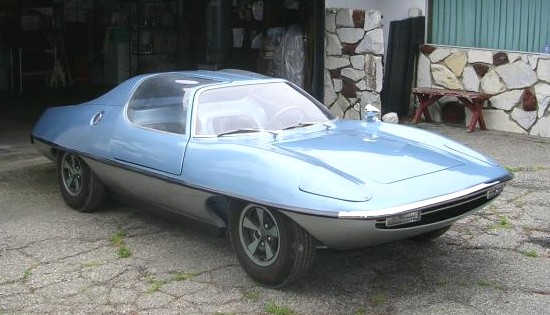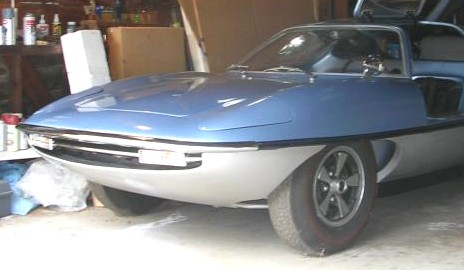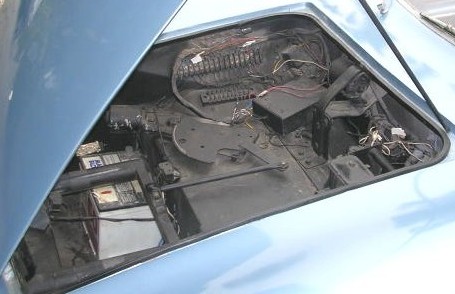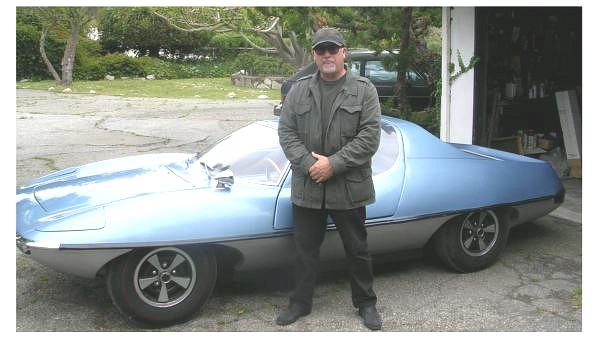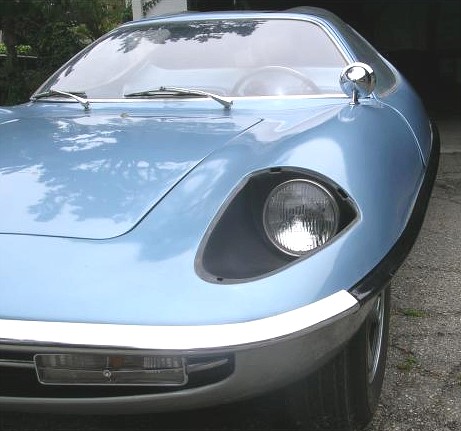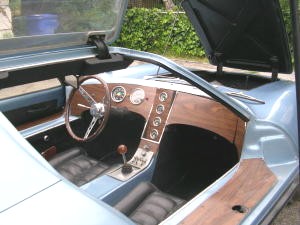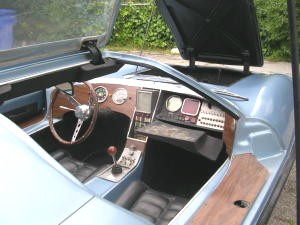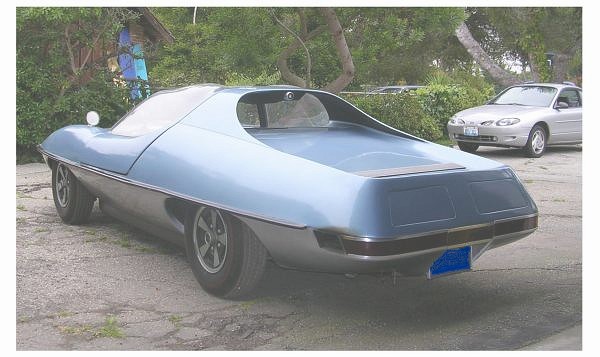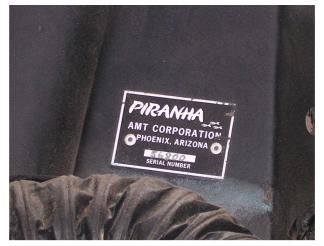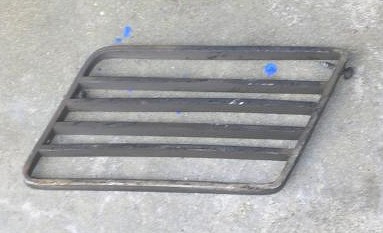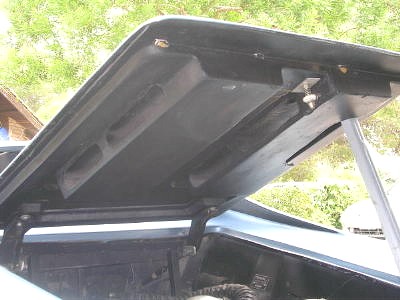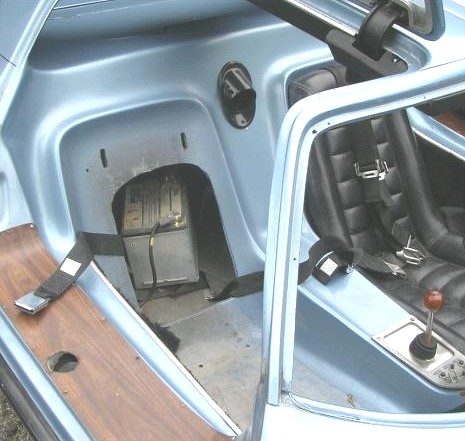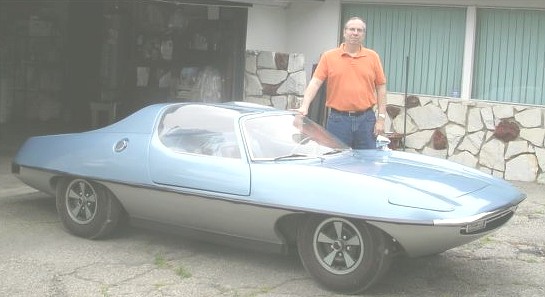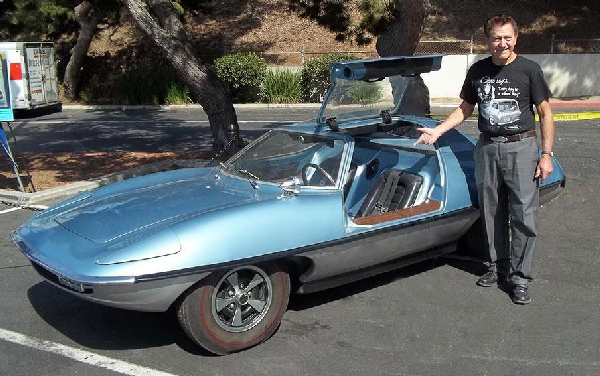|
"Man from U.N.C.L.E." Car
I have been a big fan of the AMT Piranha and Marbon Chemical CRV for a long time, but until May 2005, I had never actually seen one of the cars. On my trip to deliver a car to my daughter in California, I was able to pay a visit to Robert Short, owner of the original "Man from U.N.C.L.E." car built by Gene Winfield in Phoenix, AZ at the AMT Speed & Custom Shop. It was quite an experience for me to finally see one of the cars I have admired in magazines and on TV for over 30 years.
My first impression of the car was how nicely it has been restored. It looks brand new, with slick paint and alot of attention to detail. Robert did a wonderful job bringing this car back to its' original condition. The car was finished to resemble the color scheme used in the last season of the UNCLE series. That included a silver lower body and a wood grain steering wheel.
The UNCLE car rests quietly in a garage in southern California. As you can see, the lower portion of the nose in a fiberglass addition, larger than the original Cycolac nose. The lights in the grille area came from a Cadillac.
Short moved the car out of the garage so we could take a closer look. The car is remarkably small and low. The enlongated tail has always been an obvious change from the original CRV design, but Robert informed me the nose was also a larger fiberglass piece. We opened the hood which exposed one of the many spy features - the hidden flamethrowers. A power window motor and gears push the flamethrower units forward through the grille. The front trunk also holds one of the two batteries for the car, and various other electronics.
The two flamethrowers are connected at the rear and are pushed out with a power window unit. Other electronics and a battery fill the front trunk area. There is no room for a spare tire in the car.
Next, we inspected the interior. The inside of the car is well detailed, but hard to access. Getting in requires stepping on the seat cushion and sliding under the steering wheel. With the gullwing doors shut, it is no place for someone with claustraphobia. The footwell is tight and there is little space for long legs. Robert demonstrated the various hidden spy gadgets and their functions. The windows do not open and the car has no air conditioning or ventilation.
In this shot you can see the enlongated rear deck which blends flawlessly into the styling of the body. The two "smoke generator" doors are in the closed position. A red taillight lens runs the full width of the rear deck and a working parachute is hidden in a compartment behind the license plate. The rear exhaust grilles, just in front of the taillight on either side, were off the car at this time.
Our inspection moved to the rear of the car. Short informed me that the mag style wheels were actually vacuformed covers, also made of Cycolac. He then explained how the working parachute is located in a compartment behind the license plate and drops out at the touch of a buttom. The small grilles at the back of the car, just at the leading edge of the taillight lenses, are vents for the exhaust. They were not on the car, but I saw them later. We opened the engine compartment to reveal the 140 hp flat six Corvair engine with four carberators.
Various electronics were scattered around the engine bay. A chrome rod ran from the front of the compartment to the rear and was attached to the "smoke generator" doors. When activated, this rod pushes both the doors open. Also visible was the rare "Piranha" ID plate installed by Gene Winfield when the car was built.
An odd shaped "snorkle" sits in front of the fan on top of the engine, with a vent hose running toward the front of the car. After some investigation, we found the hose led to an electric fan behind the seats and open to the underside of the car. This was no doubt an accessory that supplies fresh air to the engine to help keep it cool.
The rarely seen engine compartment of the UNCLE car. The chrome rod down the center opens the "smoke generator" doors in the rear. Note the ID plate mounted on the right side of the compartment. The triangular shaped "snorkle" blows fresh air into the intake fan to aid cooling.
Another interesting sight was the underside of the engine compartment lid. There are two rectangular fiberglass boxes that are attached to the inside with holes toward the outer edges of the engine compartment. These are the same units used on the other CRV's and Piranha's. but were designed for the two vertical Porsche grilles that were used originally. The boxes allow air to come in to cool the engine, and channel any rain away from the fan and electrical wiring.
There is another battery located behind the passenger's seat, between the seat back and the engine bay. It is accessable by removing the seat. Piranha gas tanks are located inside the body, on the passenger's side. They are attached to the chassis, just under the black beltline, between the door opening and rear wheel. The tank is cylindrical and made of fiberglass.
The second battery needed for the car is accessible by removing the passenger's seat. Also visible are the 3-point seat belts, shift lever, and small vent nozzle located between the seat backs. Short removed the windshield for this shot.
CRV/Piranha website owner, Nick Whitlow, got his first look at a "real" Piranha in May 2005. Note how small and low the car really is compared to a 5' 11" tall person.
Gene Winfield was recently reunited with the "Man from U.N.C.L.E." car that he built back in 1966. He was also a special guest at the "Golden Anniversary Affair" celebrating the airing of the first episode of the MFU series.
Here are some other unusual facts about the "Man from U.N.C.L.E." car:
The car was originally built on a chassis owned by Marbon Chemical. When the UNCLE series went off the air and the AMT/Marbon partnership fell apart, Marbon wanted their original chassis back. Gene Winfield and his staff stripped the body and spy gadgets from the Marbon chassis and rebuilt the car on a chassis owned by AMT. The Marbon chassis got a new stock Piranha body.
During the rebuilding of the car, Winfield made a few minor changes. The original door latches that were mounted on the outside of the doors, were removed and a new latching system installed. The seam between the rear portion of the roof and the body was molded-in to resemble one solid piece.
During Robert Short's restoration of the car, a thin black pinstripe was painted on the car to resemble the original seam along the roof.
A very special THANK YOU goes to Robert Short for allowing me to see and photograph his car. He was a wonderful host and a great guy. Be sure to check out his latest special effects work in Disney's "Herbie - Fully Loaded."
| |||||||||||||||||||||||||||||||||
